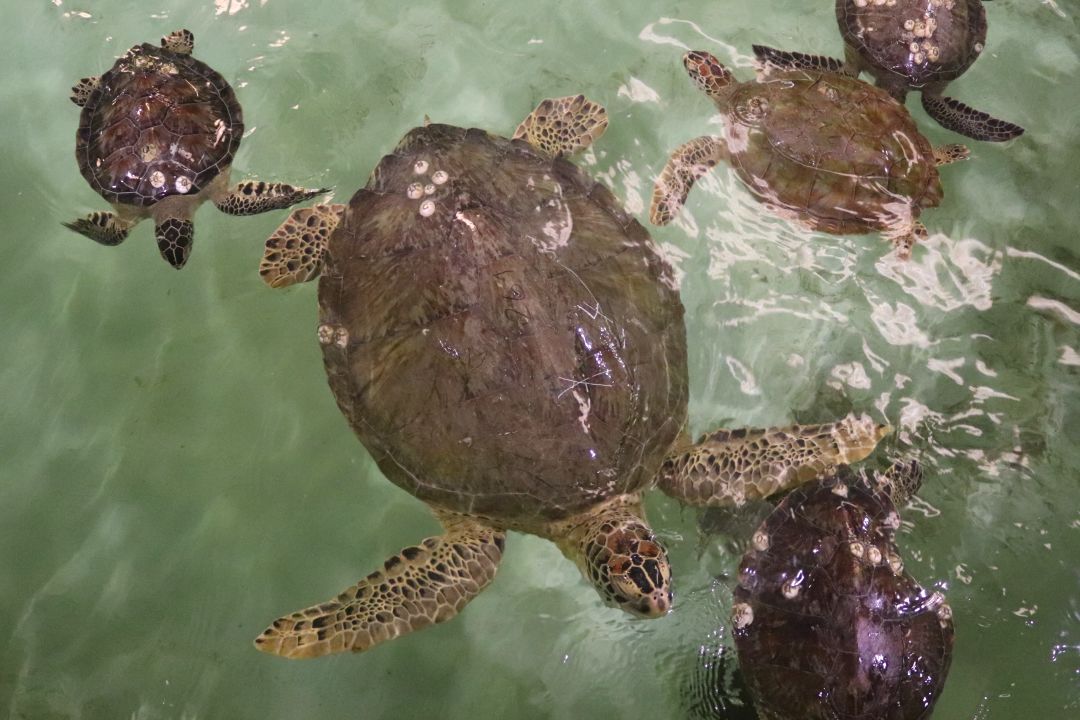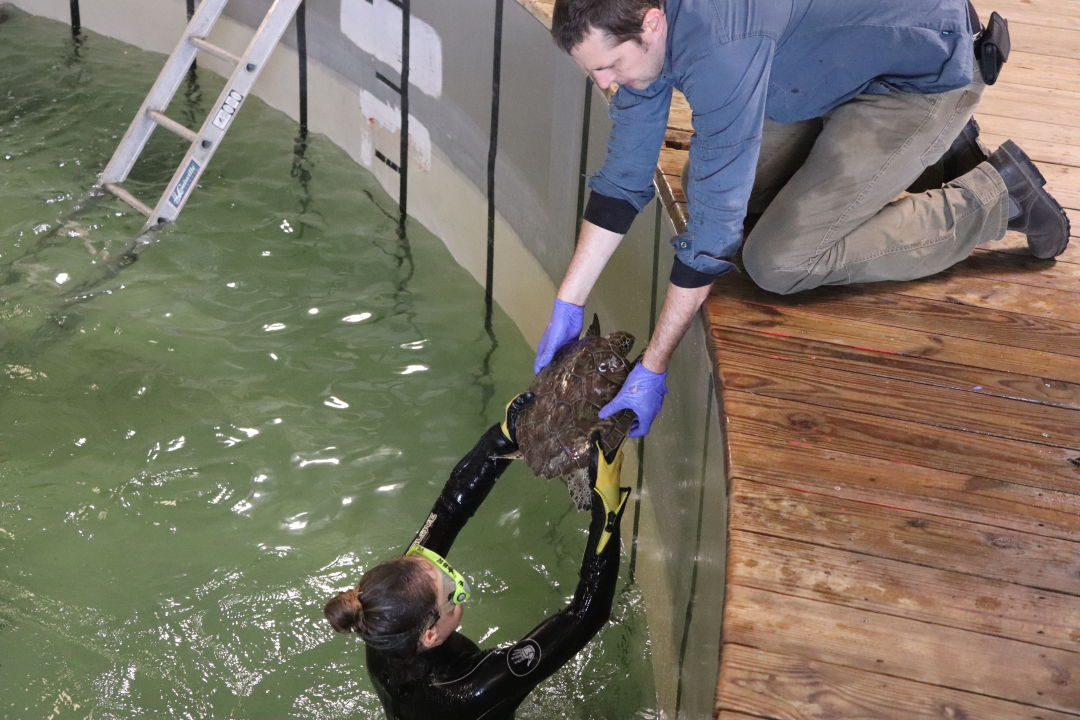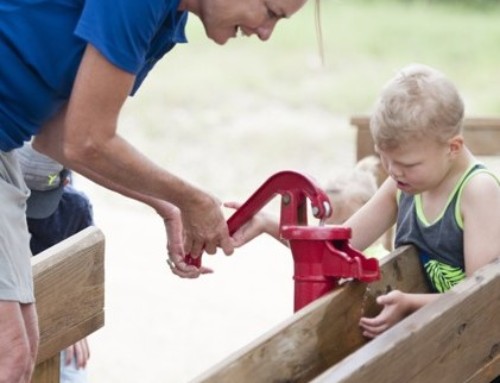
Turtle power.
“We had no idea we’d be inundated with cold-stunned turtles,” the aquarium’s president and CEO Tom Schmid says. Call it serendipitous, but the the aquarium had just undergone a huge expansion, so its rehab center was already equipped with state-of-the-art equipment and a lot more space to take on what some researchers are calling the biggest turtle cold-stunning in Texas since the 1980s—the cold threatened the lives of more than 2,000 sea turtles; that’s a third of all the sea turtles in Texas.
So what is a cold-stunning, you ask? It’s kind of like turtle hypothermia, and it’s affected the area’s green turtle population the hardest since the species thrives in the bays off of Corpus Christi, where they feed on vegetation and live in shallower waters that are more susceptible to drastic temperature fluctuations.

A sea turtle warms up at the Texas State Aquarium’s rehab facility for turtles, birds, and raptors.
“Since sea turtles are reptiles,” the center’s managing vet technician Alyssa Barrett says, “they rely on heat from the environment. If you ever see turtles basking on a log, they’re getting heat, so they can move around. When you have cold snaps, and the water is going from 60 to 50 degrees, their bodies go into a hibernation state.”
Turtles that are stunned by the cold won’t really swim or try to avoid people, but just float there or become stranded. Usually, they don’t want to eat and have little to no energy.
To read the full story please visit Houstoniamag.com




